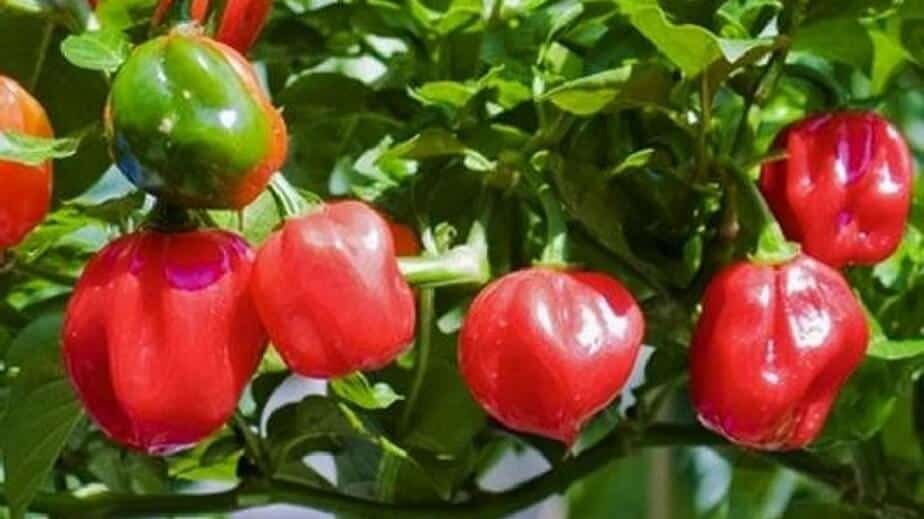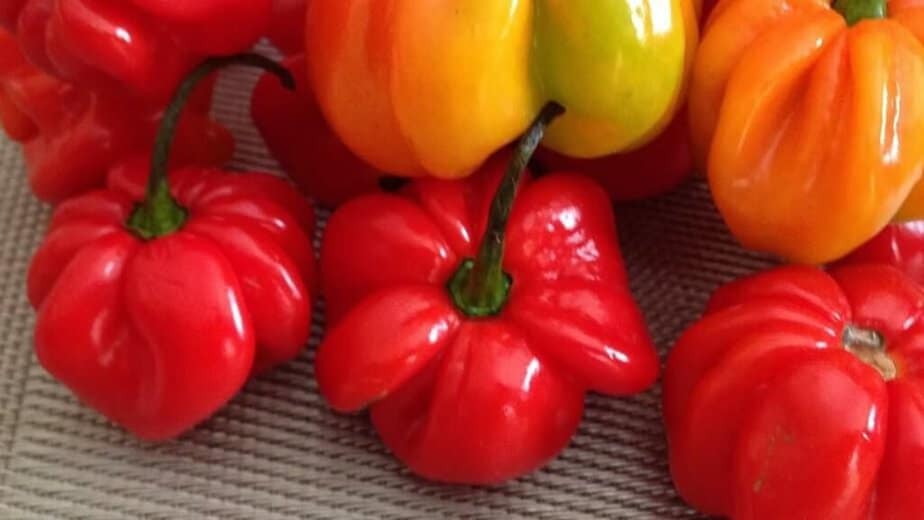Habanero pepper is a dash of very hot chili pepper, a darling of people who enjoy hot and spicy foods. In fact, it is one of the most commonly used and spiciest chilies around the world. Today, you’ll find over a dozen varieties of Habanero that have been created through selective breeding and natural changes that occurred through growing conditions. The most popular varieties of habanero peppers are Caribbean Red, Scotch Bonnet Pepper, Red Savina, Datil Peppers, Peruvian White, and Jamaican Chocolate. This article explores all the important features and uses of Caribbean red habanero pepper.
What Caribbean Red Habanero?
Habanero Caribbean Red is a very hot chili that belongs to the Capsicum Chinense species of the Solanaceae nightshade family. The origin of Habaneros is said to be in the Yucatán peninsular region in Mexico.
Initially, the habanero peppers were spread by birds and other frugivores across the islands of the Caribbean. With the arrival of European colonialists, the Habanero and other peppers from South America were taken to Europe and Asia.
Caribbean Red is one of the hottest variations of Habanero; twice as hot as the standard orange Habanero. In appearance, this lantern-shaped and slightly wrinkled chili is about 1.5 inches long and 1 inch in diameter. They ripen from lime green to a bright red.
The plants of Caribbean Red grow bushy with strong trunks and reach an average height of 3 feet. They grow best in a sunny climate and take up to 7 months for the first batch to harvest.
If you wish to buy this chili, don’t expect to see them at your typical supermarket. They are mostly available only in the Caribbean region, that too on a limited scale. Some specialty stores and farmers’ markets in your area might be selling Caribbean Red chilies. I would recommend you buy the heirloom seeds of this chili from a reliable online seller and grow them in your garden; it easily grows in a sunny climate.
Key Facts In A Gist
- Capsicum species: Chinense
- Origin: Yucatán, Mexico
- Other names: Caribbean Habanero, Caribbean Red
- Heat level: 300,000 to 445,000 SHU
- Median heat: 372,500 SHU
- Size: One to two inches long
- Shape: lantern-shaped
- Color: Green, ripens to bright red
- Flavor: Citrusy, Smoky, Sweet
- Use: Culinary
- Popular recipes: hot sauces and salsas
- Substitutes: Red Savina Habanero, Indian Tezpur, Scotch Bonnet, Bird’s Eye
Caribbean Red Habanero Scoville
The heat level of Habanero Caribbean Red can range between 300,000 to 445,000 SHU on the Scoville Scale. A perfect 6+ is the sharpness level of this pepper. After Red Savina, this pepper is the second hottest pepper among all varieties of Habanero chilies. Red Savina habaneros is an extremely hot pepper that can reach up to 577,000 SHU. Compared to the Jalapeno pepper, the Caribbean Red pepper is 70 to 80 times hotter. Heat-wise, Indian Tezpur chili comes in the same range of heat as this one.

Caribbean Red Flavor
The Caribbean Red has the same flavors as Habaneros in general. It’s slightly smoky, citrusy, and sweet, like the orange habanero. Overall, a mixture of Paprika and Lemon Drop Peppers is what you immediately notice in this pepper. What differentiates this pepper from the rest is its spiciness, which is more than a mediocre chili eater can tolerate.
Culinary Uses
Being a very hot chili, the Red Habaneros aren’t a typical daily-use chili in cooking. You’ll find several recipes that use the common orange habaneros, but that isn’t the case with overly spicy Caribbean Habanero. Flavor-wise, it’s an excellent chili to use in a wide array of dishes. Tropical hot sauces and salsas would taste great with citrusy, smoky, and sweet notes of this chili.
If you love to enjoy extreme eats, then Caribbean Read is a possible alternative to orange habaneros, Scotch Bonnet, Bird’s Eye, Or Jamaican Yellow chilies. Precautionary warning: always use gloves and kitchen glasses while preparing very hot chilies like habaneros and others to avoid chili burn. And keep that milk handy, just in case you get a chili burn.
For further reading, find out all the facts on Bishop’s Crown Pepper in another article on this blog.
